In the domestic motor production and testing, turn-to-turn insulation test project more and more attention. Previously, the manufacturer used turn-to-turn insulation tester with visual waveform difference test method, turn-to-turn insulation test method developed from the visual to the computer for analysis and judgment. Pulse impulse circuit from the thyristor to the development of high-voltage thyristor circuit, the circuit is stable and reliable, without preheating, long life. Turn-to-turn insulation test technology has been developed to a new level.
Turn-to-turn insulation test principle is to use a high-voltage narrow pulse (according to the existing standard pulse rising edge of 1.2μs, 0.5μs two) added to the measured winding at both ends of the pulse energy in the winding and matching capacitance to produce a parallel Oscillation, due to the existence of the DC resistance of the winding, the resonance is a decay wave and approaches zero quickly. Analyzing the difference between the oscillation waveform of the winding under test and that of the standard winding can judge the advantages and disadvantages of the tested winding Whether there is inter-turn short circuit or inter-turn insulation problems.
The traditional method of turn-to-turn insulation judgment is to apply the two oscillating waves of the standard winding and the measured winding to a two-line oscilloscope. The difference between the amplitude and the frequency of the two waveforms is visually observed, and the tested winding is qualified according to experience The fundamental disadvantage of the method is to judge the subjective and arbitrary, there is no quantitative assessment of indicators, this method often leads to differences between manufacturers and inspectors and contradictions.
With the development and popularization of computer technology, the turn-to-turn insulation test method has been greatly improved. A high-speed A / D system is used to digitize the attenuated self-excited oscillating wave analog signal of the pulse voltage impulse of the winding. For analysis and comparison, and calculated by the computer to determine the changes in the parameters.
1. Waveform to determine the parameters, there are many forms, such as the use of the measured winding oscillation and the X-axis area and the standard winding oscillation and the X-axis area percentage difference between the percentage method, the difference between the two wave frequency method, with The percentage difference between the two wave area, corona discharge method, bridge imbalance method. The more common ones are the area percent difference method and the frequency difference percent method.
It can be seen from the above equation RL, L will affect the changes of f and ΔW0. While L has a greater impact on f, RL on ΔW0 larger, that is, the impact of the waveform area more obvious.
2. The standard windings to establish a standard waveform, and if the measured winding inter-turn short circuit, the measured winding in addition to reducing the number of turns caused by changes in L and RL, the more important because the short circuit induced potential will produce a large Of the induced current, resulting in winding energy loss, waveform attenuation accelerated, the waveform area and the standard winding waveform area difference ΔS increase ΔS / S increase. DS increase on the tester, in order to determine the existence of inter-turn short circuit. The measured winding turns more turns, the greater the energy loss, dS is also greater, the more able to determine the short-circuit state. A general motor short circuit, the dS to 8 or more. If the measured winding is only a short circuit between the turns, resulting in small changes in L and RL, so the frequency change is not obvious. From here we know that in the product inter-turn insulation test the state of the product under test and the status of the standard product must be consistent to avoid causing unnecessary errors.
3, the correct choice of the test parameters
3.1 Peak voltage test Peak voltage range between 500 ~ 3000V, displayed by the digital voltmeter. Winding the total number of turns, the peak voltage optional high, the total number of turns less optional peak voltage lower. The peak voltage is indicated by the peak hold circuit and the digital display indicating the actual value. Therefore, only in the moment of peak pulse occurred only show that the display time is very short, the operator should pay attention to observe. Pointer table indicates the high-voltage AC voltage, but has been converted to the peak pulse, under certain load with the digital display indicating that the peak voltage can be used as a reference when adjusting.
3.2 The threshold dS is the percentage of the difference between the measured motor winding oscillation waveform and the standard motor oscillation waveform area, dS = ΔS / S × 100%. The threshold value is determined by the resistance difference, inductance difference and turns of the winding under test and the standard winding Between short-circuit and many other factors. Knowing from the previous formula, the equivalent impedance of the resonant circuit Z0 = ρ2 / RL and ρ2 = L / C, therefore, the changes of RL and L all influence the size of loss p0, make ΔS, dS increase.
It can also be seen from the formula that p0 is proportional to RL and inversely proportional to L, but here dS takes the absolute value and has no relation with the positive or negative of ΔS.
From the formula also shows that the loss is also proportional to the peak U2, requiring stable test power supply, or dS greater impact on power supply fluctuations.
From the previous detection principle we can see that the biggest factor affecting the dS or inter-turn short circuit occurs, turn to turn short circuit so that energy loss increases rapidly, waveform attenuation accelerated, dS increases.
3.3 Threshold df The measured winding self-excited oscillation frequency and the standard winding self-excited oscillation frequency difference df = Δf / f0 × 100%, the main factor affecting df is L, when the Q value is smaller, the change of RL will affect the frequency change.
The factors that affect L are the total number of turns in the winding, the number of turns, the tightness of the winding, the shape of the plastic, the change of the core material, the time before and after dipping.
When the number of inter-turn short circuits is small, the change of Δf is not obvious. Only when the number of short-circuit turns is large and the change of L is affected, Δf will increase.
When the tester connected to the parameters of regulated power supply voltage stable at less than 1%, df repeat cover accuracy of 0.5%, ds repeat coverage accuracy of 1%.
After a standard winding self-oscillation waveform was established, the measured winding waveform and standard waveform comparison, dS and df impact factors roughly three categories
① due to the manufacturing process, materials, etc. df 1% to 2% change, dS 2 to 5% change, this change is not caused by inter-turn short circuit, should be separated.
② tester by the temperature, power supply changes and other effects, the error of repetition appeared dS 0.5% to 1%, df 0.5% to 1%.
③ inter-turn short circuit, corona discharge, etc., a turn short circuit, multi-turn short circuit or layer short circuit, will cause dS 8% ~ 15% change or more. How to influence the influence of 1, 2 factors on dS and df separately from the influence of the third factor on dS and df is the purpose of determining the threshold size. There are several ways to do this:
(A) Set dS and df to 15% at first, measure 100 ~ 200 sets of a certain motor, call up the test data from the computer "display database", observe the range of dS and df, dS and df value, increase 1% ~ 2% fixed threshold.
(B) deliberately causing the winding to short-circuit one turn or two turns, measuring its dS and df values, and then setting a threshold of 1% to 2% below the detection value.
(C) Based on long-term production practices and experience, each plant's quality control department sets a suitable threshold.
In short, there is no single standard threshold setting, according to the type of motor and the production process to determine.
3.4 Period T selected
In the test station threshold set interturn test items, the last one is T, T for the measured winding and the standard group of two waveforms compared to the number of cycles. Visible the total number of oscillation cycles to be set, the general can choose 1-3, choose less will not affect the test accuracy. Here also need to explain that the test bench to improve the detection sensitivity, compared to the waveform from the second waveform, that is, dodge the original pulse wave, from the start of real self-excited oscillation wave comparison. This measure greatly improves the detection sensitivity, so that the device turns turn 1 ‰ turn can be more easily identified. In a comprehensive test, the winding less around a turn, can be detected by turn to turn insulation, the answer is no. We can see from the previous formula, more or less winding circle, the changes in the winding L and R is small, and winding a short circuit can not match the energy loss.
For the motor rotor windings in a group of anti-embedded coil, can use turn-to-turn insulation test method to distinguish. Generally speaking, 2-pole 4-pole, 6-pole, if a set of anti-embedded motor, the greater impact on the entire winding, Q value becomes smaller, DS can reach about 8% -10%, while the 8 pole, 10 pole motor Group of anti-embedded coil, the DS and df changes in small, roughly between 5% -8%, if the motor technology is stable, stable materials, product parameters are good, the dispersion is small, then DS 5% can be resolved, But hand-embedded eight-pole motor inter-turn insulation test, DS dispersion has reached 8% -10%, then the anti-embedded group can not be used to turn insulation test to distinguish.
4. The actual measurement and identification methods
Assuming that the rotor inter-turn insulation is completely short-circuited, in practice, the insulation defect turns are not completely short-circuited in many cases, and only when the rotor voltage exceeds the voltage that the insulation defect can withstand, can it cause the insulation at the defect to strike Wear and form a short circuit ring, so the actual inter-turn insulation voltage amplitude must meet certain requirements. For different voltage levels of rotor inter-turn insulation test pressure amplitude can refer to the drawings and specifications.
The actual detection of the waveform, a good validation of the analysis results, but also shows the pulse voltage resonance method for rotor interdependencies insulation defect detection effectiveness. According to the theoretical analysis and the actual measurement, this paper concludes two methods to judge whether the inter-turn insulation of the rotor is good or not:
(1) At lower voltages, the inter-turn insulation of the rotor can be considered as not being broken down. In this case, the oscilloscope records the oscillation waveform of the rotor when it is well-insulated and then raises the voltage to the required value, passing through the capacitor Discharge can be obtained under high pressure oscillation waveform, compare the speed of attenuation of the two waveforms can determine the rotor inter turn insulation is good or bad.
(2) Under high voltage, the oscilloscope is used to measure the two rotor coils of the reactor at the same time. According to the results we analyzed above, comparing the difference between the two signals' amplitude and phase can judge whether there is insulation defect between the turns of the rotor, And thus the inter-turn insulation defects where the rotor coil and layer positioning.
5. Conclusions The feasibility of pulse voltage resonance method for rotor turn-to-turn insulation defect detection is simulated. Based on this, the rotor turn-to-turn insulation defect detection circuit is designed. In the actual measurement, some inter-turn insulation defects were considered at different positions of the rotor and were measured by the designed circuit. Judging from the waveform actually measured, when the rotor interdendritic insulation defects appear in different positions, the law of attenuation of the oscillation waveform is basically the same as that obtained in this paper. Enough to ensure the rotor inter turn insulation excellent performance.
Contact:Shanghai Wind Automation Equipment Co.Ltd
Email:emily@motor-machinery.com
Skype: motor.machinery
Mobile: +86-18067425780
Website: www.motor-machinery.com;www.coilswinding.com


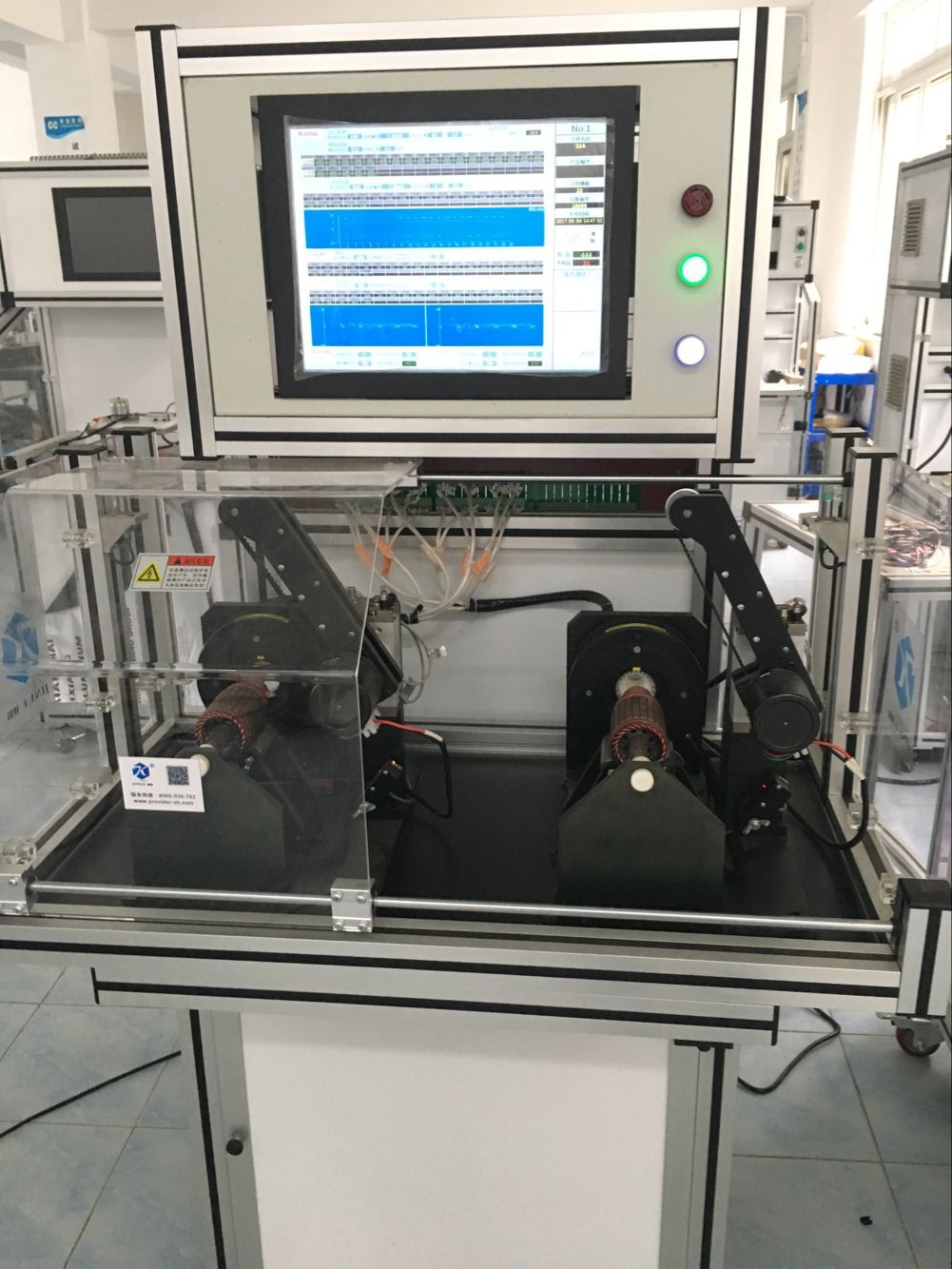


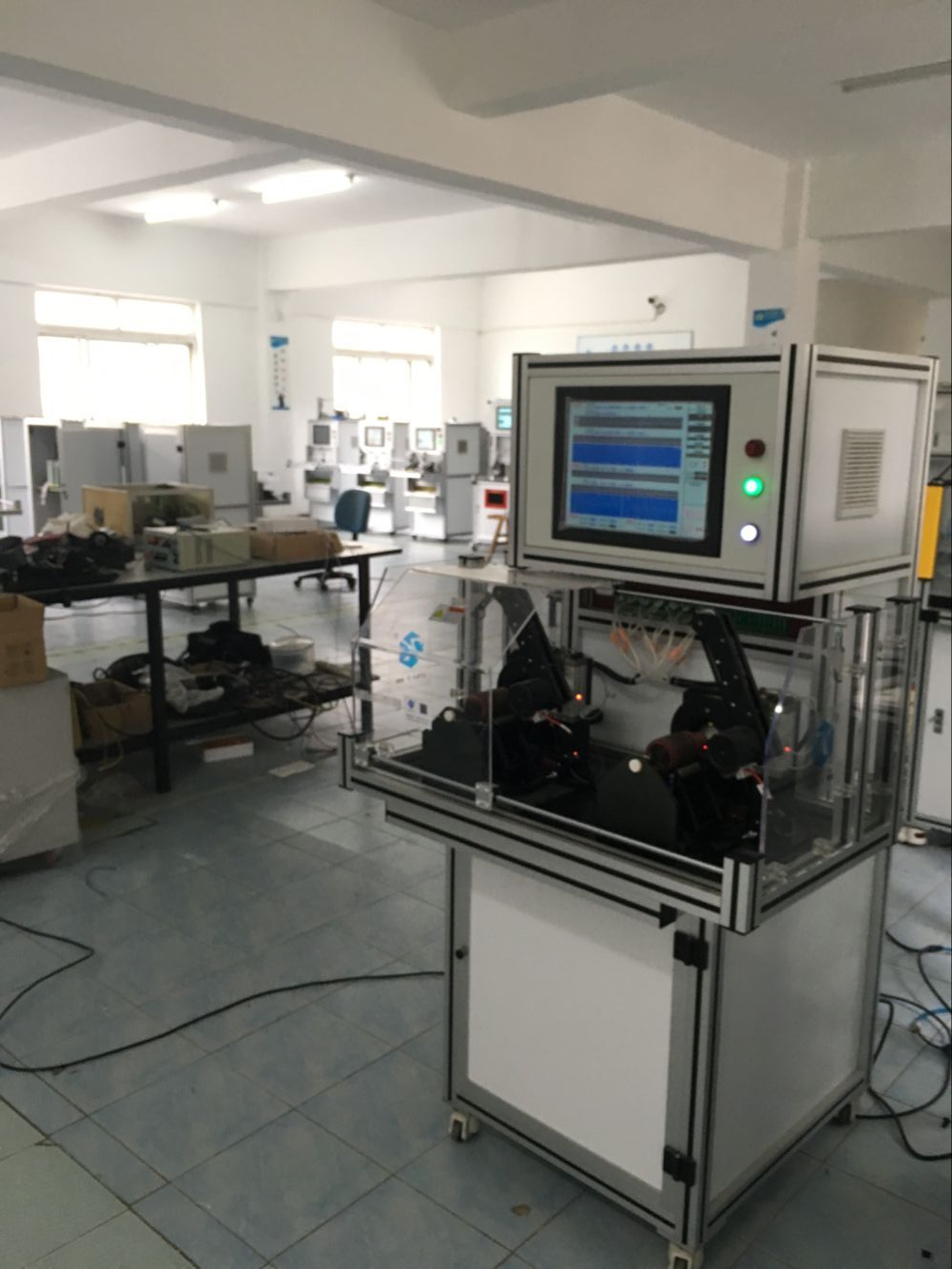
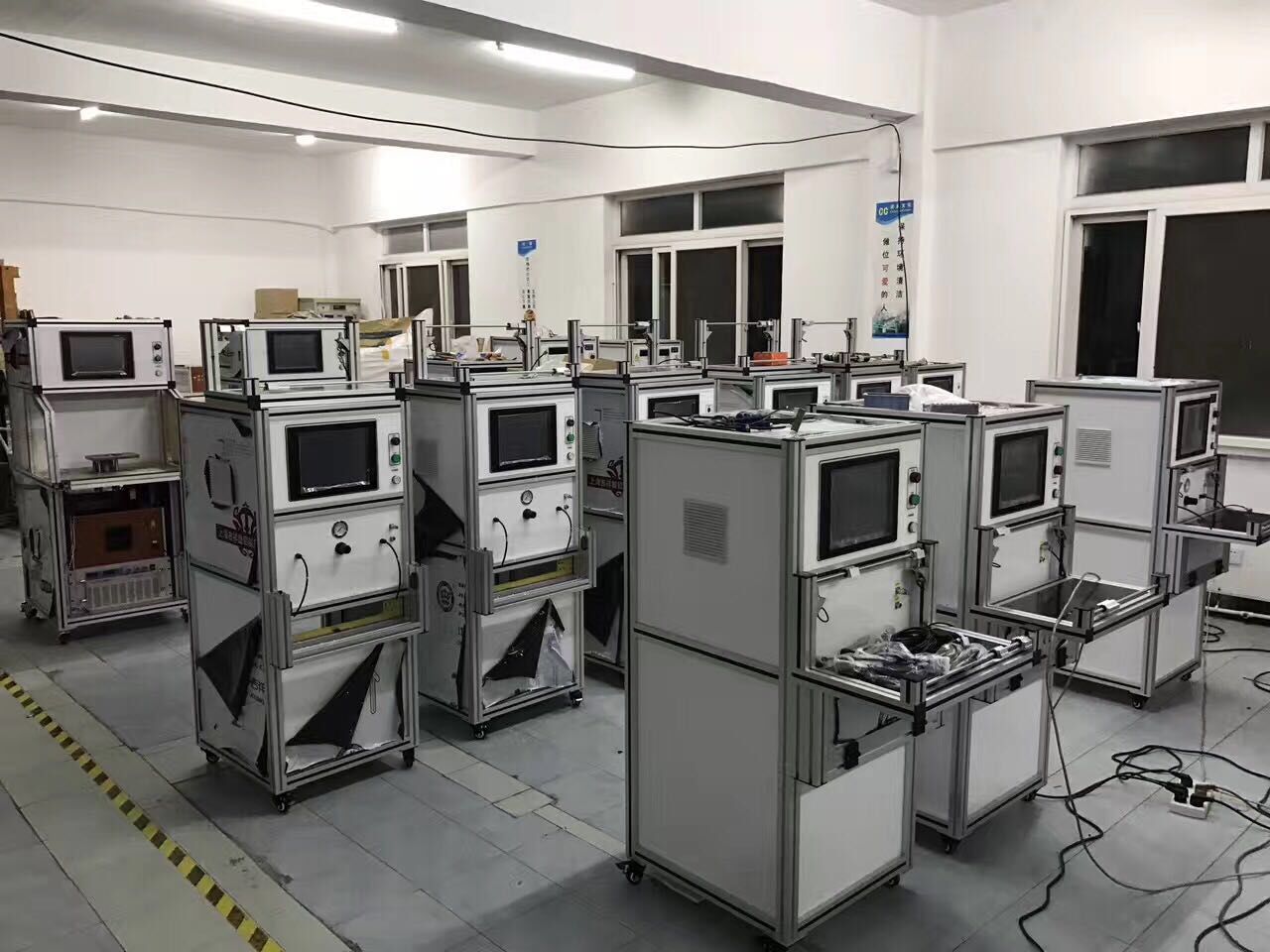

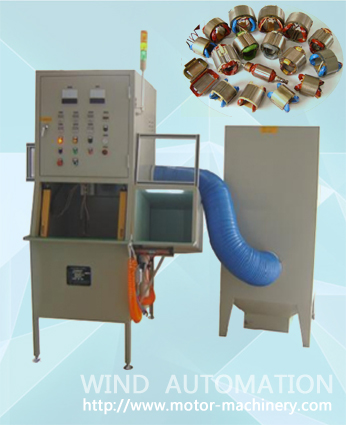
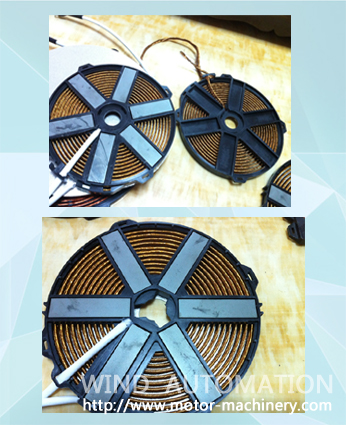


 Pearl
Pearl Emily
Emily